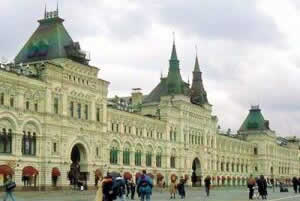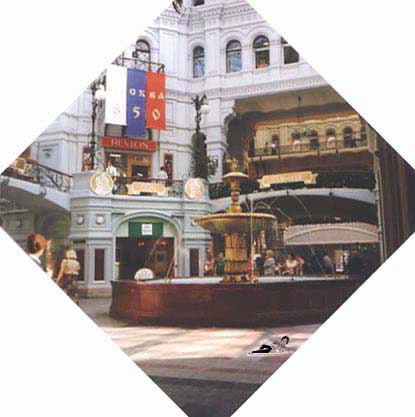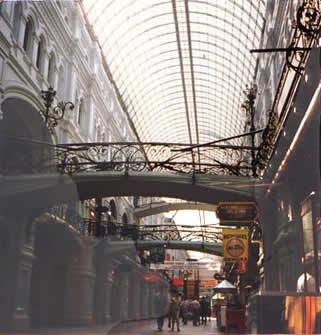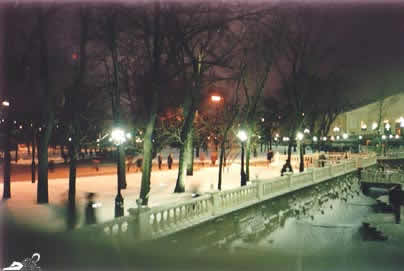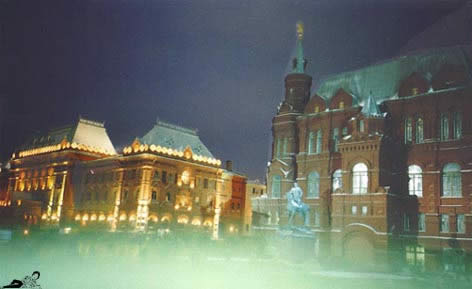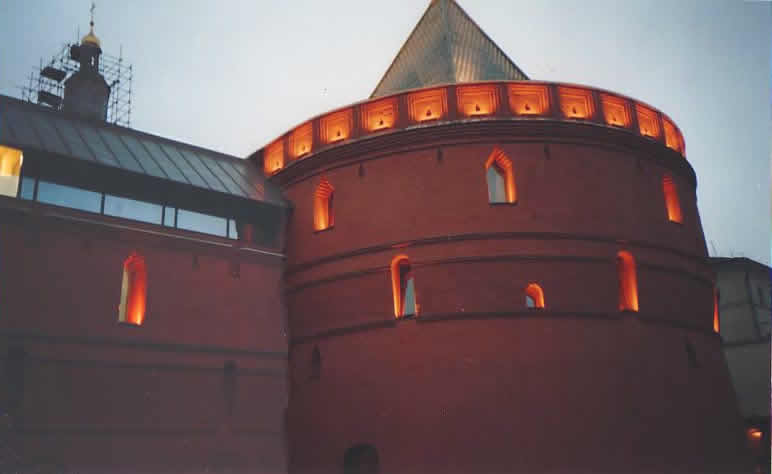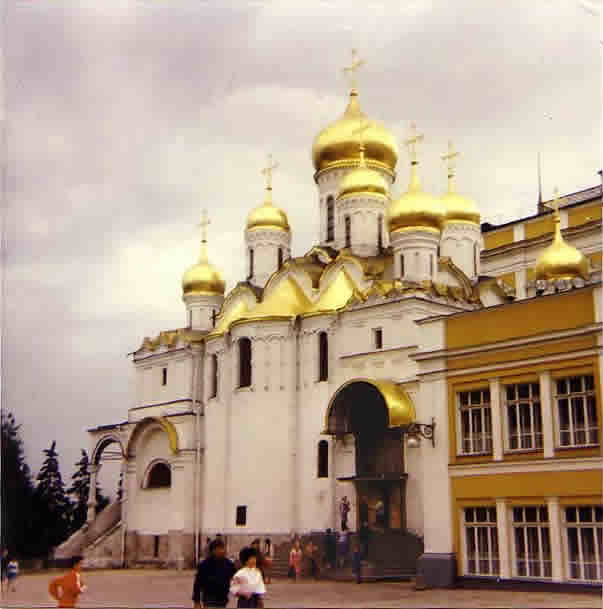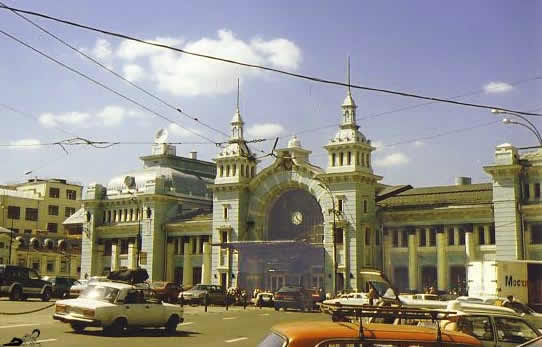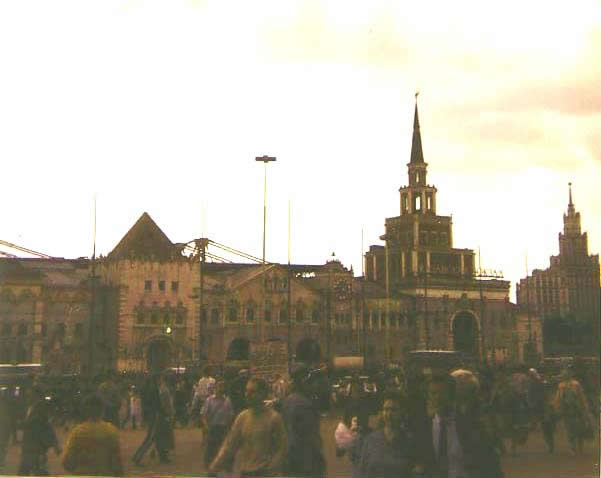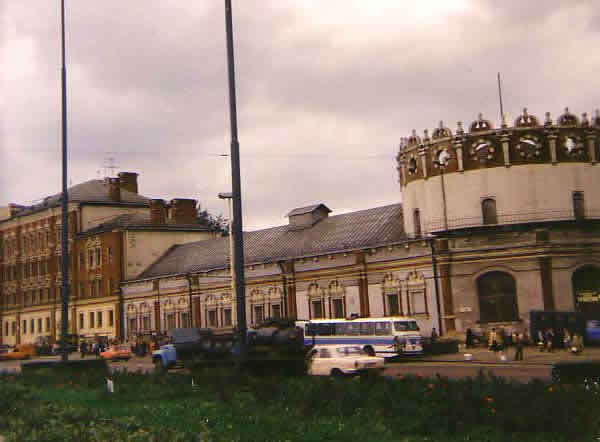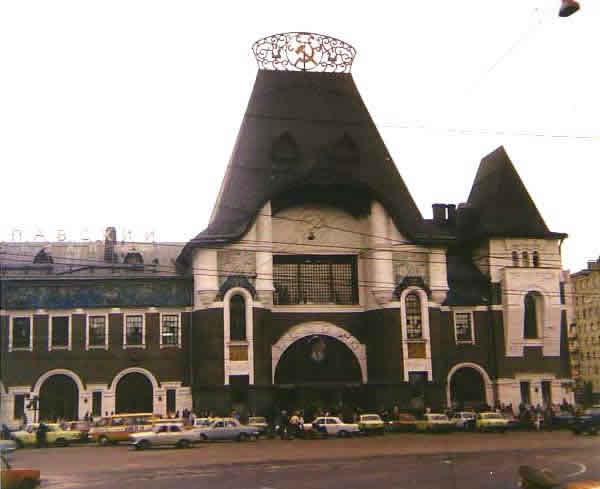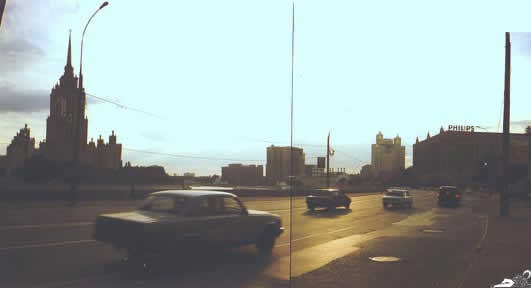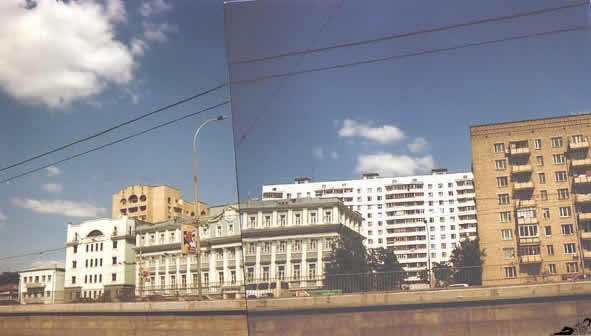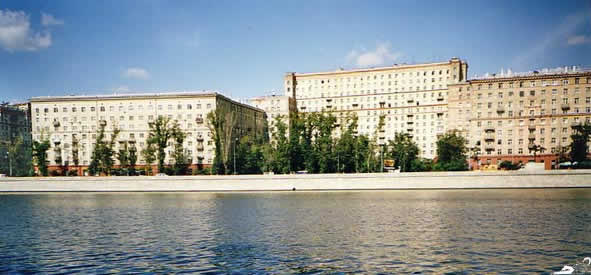Contemporary Moscow/Part One
When I first came to Moscow I was with a friend from Leningrad, Igor, who had offered to show me Moscow, and I had consented. That was a big mistake. The most inappropriate person to introduce you to Moscow is someone from "Peter", as Petersburg has always been called. We got out of the train and he started to complain about Moscow: "I hate it. It’s a big village. Everybody comes here only for shopping!"
With his remark Igor referred to the fact that in Soviet times almost the only place where you could eventually get rare articles not obtainable elsewhere was Moscow. So everybody from another part of the country who was on a business trip to Moscow, or on a holiday, even visiting relatives, would get a list of things – from friends, relatives and colleagues at work – to look for in the capital. "They robbed the whole country in order to supply Moscow and Leningrad!", a man in Irkutsk exclaimed to me in anger, 8 years after the fall of Soviet Union.
|
The Soviet era consumption paradise: The GUM
Apart from the architectonical splendour of the building it proved innovative in so far as it was the first place in Russia where price tags were displayed, thus restricting the possibilities for bargaining. Until the revolution the name of this building was the "Upper Trading Rows". After the revolution it was used for administrative purposes. In the time of the NEP ("New Economic Policy") it became a shopping mall again and got the name used today. Again it presented an innovation: The introduction of female shopkeepers, unknown in Russia up to that day. After the NEP was called off by Stalin and his government the building again became an office building. In 1932 Stalins second wife was layed out there after she committed suicide. Later there were plans to tear down the building and build a new office building, but for lack of funds and then because of the war these plans were given up. After the war there were plans for a victory monument in the place of the GUM. Finally the original purpose was restored to the building, it was renewed and opened again as a shopping center in 1953.
Someone from Moscow told me he once nearly got squashed inside the GUM because he made the mistake to go there when there was a big trade union conference in Moscow. People had come from all over soviet Union and at the first possible moment everyone rushed to the GUM to look for scarce commodities, forcing their way in without mercy.
|
Me and the fellow from Leningrad went to see the Kremlin.
He pointed at it and said: "There you see our ruin." "Why?"
– I asked. "Here power is located", he said. "Everything
bad comes from here."
When I went inside the Kremlin, then considered the Centre of Communism,
I was astonished to find out it was full of churches. It must be a very
strange kind of communism that tolerates these symbols of religion in
its very heart, I thought. A communism based on nationalism that preserves
these monuments of Russian history and identity as part of its heritage.
Nowadays the churches have remained, even multiplied, religion is respected and enjoys state support, and the only thing that has remained from the whole communist "achievements" is the Secret Service, strong and influential as in the times of Stalin.
|
The source of all evil: The Kremlin and its surroundings
|
Moscow is a city of big dimensions and of great extremes. It covers an area of more than 1000 square kilometers, and houses more than 8 million people. I have experienced this city in times of incredible scarcity and of overwhelming abundance. Nowhere you can see so many expensive fur coats, buy so many luxurious foodstuffs as in Moscow – if you have the money. On the large 6 to 8 lane streets that were built for parades in Soviet times cars from Western Europe and Japan are either caught in traffic jams, or they rush along at a speed as if they were on a highway, making it impossible to cross these streets.
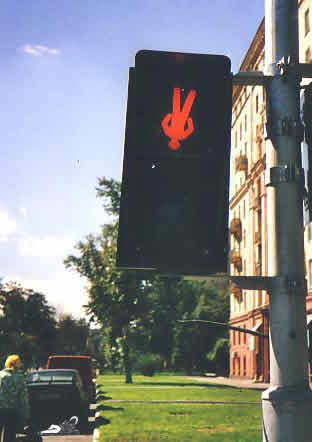 |
Meanwhile on the sidewalks homeless children, often in the company of abandoned dogs, are trying to make their way through the city jungle, organising themselves in gangs. There are more homeless kids now in Russia – in Russian called the "not-cared-for" – than after the Revolution, in 1921, when the phenomenon appeared for the first time in Russia on a large scale.
Moscow is the city with the highest consumption of heroin per capita in the world. A large part of the Afghan opium ends up here, a kind of late revenge for the war. It is supplied predominantly by Chechen drug dealers, – another revenge for another war. |
Horrible things have taken place in Moscow and all of Russia since the fall of communism and the introduction of "wild capitalism". Children were stolen from the streets and sold abroad, presumably for adoption or as spare parts for organ transplants. Elderly people have been killed because they lived in valuable apartments in central locations. Great masses of hobos have appeared on the streets and in the underground, divided by the Russians into two categories: The "bomzhi", who are just people without homes who still might find their way back into society if they don’t die before that, and "bitchi", former intellectuals or people who occupied leading positions who never can recover from the privation they have been cast into, and to whom homelessness is just the last stage before death.
|
20th century Moscow: From the Tsars till Postcommunism
The Belarussian Station, more precisely: the left wing of it. The train stations are monuments of a special kind in Moscow. When railroads started to be constructed all over Russia about 1860, Moscow was not a priority of the Russian government. Railroad construction around Moscow therefore relied on private initiative. It was the wealthy merchants of Moscow who played an important role in the planning and financing of the railroad net around Moscow, and the train stations should be visible proofs of their wealth and social importance. The precursor of the building now known as Belorussian Station was built in 1870 and called Smolensk Station, as Smolensk was the first city to which this train line lead. Later it was called Brest Station, as the line had been extended till Brest. In honour of the 100th anniversary of the Patriotic War (the war waged against Napoleon in 1812) and the Tsar who led and won that war it was renamed Alexander Station. After the Revolution it was called the Belorussian-Baltic Station, and finally in 1936 it received its present name. The original building was completely reconstructed about 1910 according the plans of the architect Ivan Strukov. It opened again in 1912, in its present form. As it was one of the first buildings constructed from steel and concrete it also constituted a landmark in the development of Russian architecture. The Belorussian Station has had her moments of glory: In 1928 Maxim Gorki arrived here, returning from exile, and was welcomed by politicians and popular masses. So was the reception in 1937 for the pilots Chkalov and Gromov who had flown to America across the North Pole and returned by train to Moscow. The most important arrival, though, was that of the first soldiers-victors coming home in 1945 from Germany. A film has been made where this moment is commemorated, and its title is "Belorussian Station".
Only in 1997, in the wake of Moscow’s 850th anniversary, the station was renewed again, alledgedly finally the thoughts of Shchusov were put into practice entirely. These pictures, though, were taken in 1990.
|
Moscow has had at one time more than an estimated one million illegal inhabitants, refugees from the civil war-struck regions of the Caucasus, or Russians from other former parts of the Soviet Empire where Russians have been persecuted since these regions turned into independent states. In Soviet times and until recently one needed a permit, issued by the working place, to be allowed to settle in Moscow, and whoever had no working place was illegal, prey to corrupt law-enforcement institutions who hunted them in order to obtain either money from them – if they could pay the bribes – or rewards from their institutions for presenting them as "dangerous" illegals. The residence permit regulations – the need for the "propiska" – have been first abolished, then reintroduced, the manhunt goes on, presumably even increased due to the control regulations in the wake of the "fight against terrorism".
